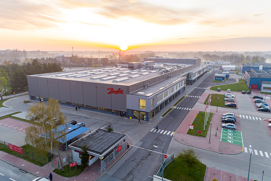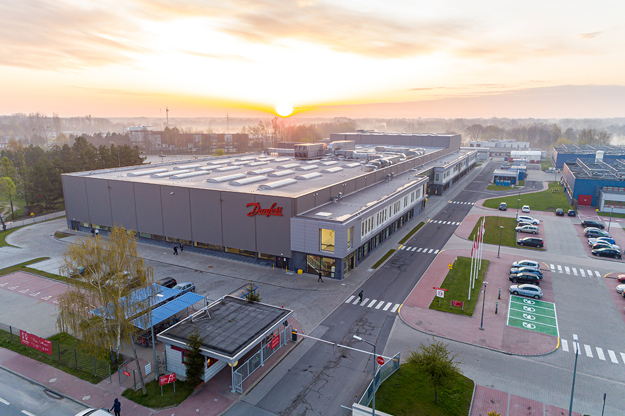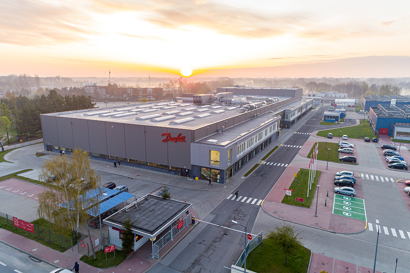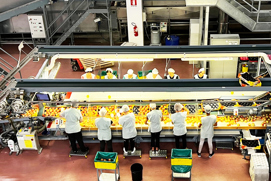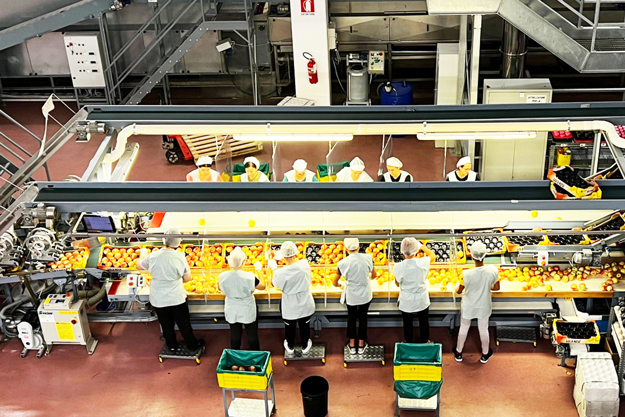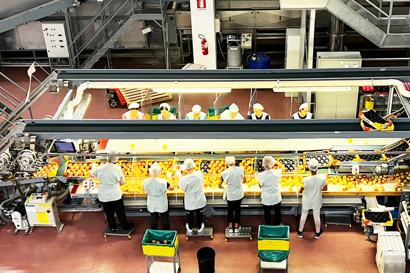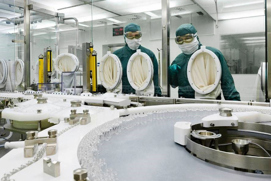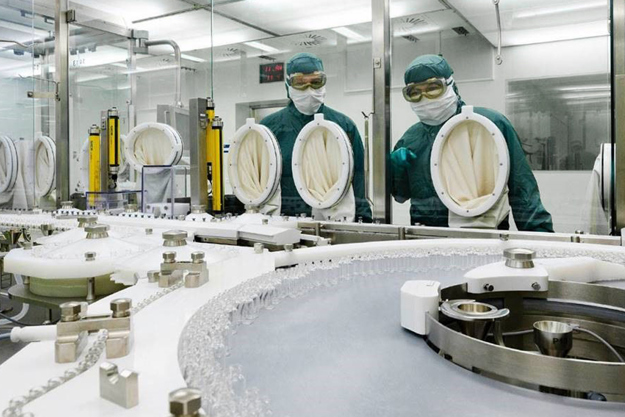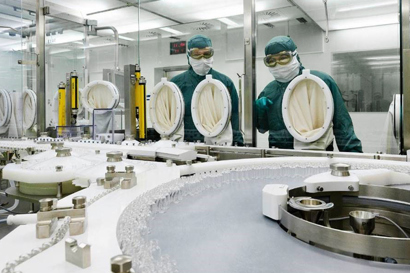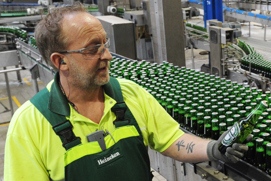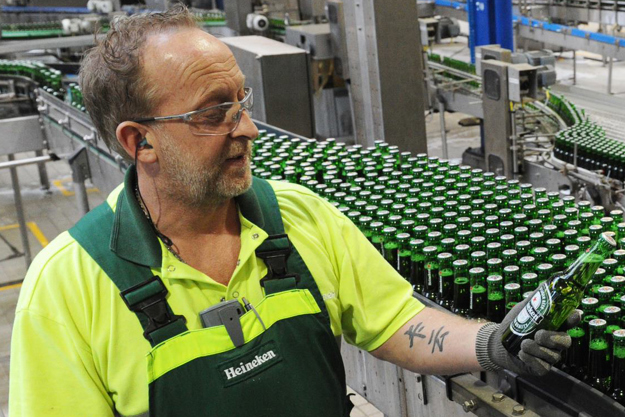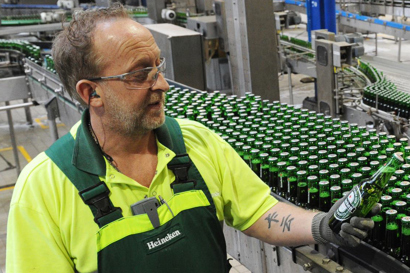
Today, drives are more than simple power processors. With the ability to act as sensors and sensor hubs, to process, store and analyze data, along with connectivity capabilities, drives are vital elements in modern automation systems. Integrated condition-based monitoring functionality enables new ways of performing maintenance, such as condition-based maintenance.
Evolution of Industrial Automation Systems
In the transition to the current millennium, we have witnessed a profound change in technology, which has led to a whole new way of working in a digital world. This is the fourth industrial revolution. The first industrial revolution, which occurred during the 18th and 19th century, was a mechanical revolution, triggered by the invention of the steam engine. By the end of the 19th and early 20th century, the second industrial revolution unfolded with the adoption of mass production, electrification, and changes in communication. This period is also referred to as the Electrical Revolution. Later in the 20th century, the third industrial revolution brought advances in semiconductors, computing, automation and the internet. This phase is also known as the Digital Revolution.
The fourth industrial revolution has emerged as a result of networking computers, people, and devices fueled by data and machine learning. Although the term “Industry 4.0” is quite vague, a possible definition for Industry 4.0 describes the intelligent networking of people, devices, and systems by utilizing all possibilities of digitalization across the entire value chain.
Trends in Industry 4.0 Automation Systems
The impact of Industry 4.0 on motor systems is a migration from the “automation pyramid” to “networked systems”. This means that the various elements of the system, such as motors, drives, sensors and controls, are interconnected and connected to a cloud - a data center where data is stored, processed, analyzed, and decisions are made.
In an automation network, the amount of data is prominent. As data is mainly produced by sensors, the number of sensors in modern automation systems is increasing. Motors and driven machines such as fans, pumps and conveyors are not the most obvious participants in a data network. Sensors are therefore required to collect data from these machines. The sensors are connected to the data network using various means to utilize the data. During the introduction of an advanced condition monitoring system, the additional cost of sensors and connectivity is often seen as a barrier.
Modern variable speed drives open new opportunities in the Industry 4.0 automation network. Traditionally, drives have been considered power processors for controlling the motor speed. Today, drives are also part of the information chain, using the advantage of built-in processing power, storage capacity, and communication interface, within the drive.
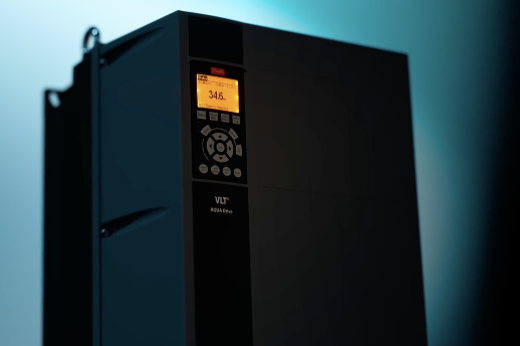
What is an intelligent drive?
In the Industry 4.0 network, the drive plays an important role and is characterized by some enabling features:
- Secure connectivity: The drive can connect to other elements in a secure manner. Other elements in the network may include drives, PLCs, sensors, and a cloud.
- The drive acts as a sensor: The drive uses motor current and voltage signature analysis to sense the motor and application performance.
- The drive acts as a sensor hub: The drive acquires data from external sensors related to the process which is controlled by the drive.
- The drive acts as a controller: The drive can replace the PLC wherever application constraints allow.
- Bring your own device concept: Wireless connectivity to smart devices (smartphone, tablet).
Information from the drive can be identified as follows:
- Instantaneous signals: Signals which are directly measured by the drive using built-in sensors. Data such as motor current, voltage, drive temperature, and their derivative, which is power as a multiplication of current and voltage, or motor torque. Moreover, the drive can be used as a hub for connecting external sensors which provide instantaneous signals.
- Processed signals: Signals which are derived from the instantaneous signals. For example, statistical distribution (maximum, minimum, mean and standard deviation values), frequency domain analysis or mission profile indicators.
- Analytics signals: Signals which provide indications of the condition of the drive, motor and application. The signals are used to trigger maintenance or lead to system design improvements.
Motor current signature analysis techniques enable the drive to monitor the condition of the motor and application. The technique allows to potentially eliminate physical sensors or extract early fault signatures which might not have been possible to detect. For example, using the technique makes it possible to detect winding faults in advance or mechanical load eccentricity.
The concept of the drive as a sensor hub entails connecting external sensors to the drive, thus saving the need for a gateway to connect the physical sensor to the data network. Vibration sensors, pressure sensors, and temperature sensors are examples of sensors which can be connected to the drive. The advantage of the concept is not only related to cost, but also enabling the correlation of sensor data with different types of data present in the drive. An obvious example is the correlation of vibration level from an external sensor with the motor speed, as vibration is speed dependent.
Condition-based maintenance and other maintenance strategies
The following are different kinds of maintenance strategies:
- Corrective maintenance: The product is exchanged after a fault.
- Preventive maintenance: The product is exchanged before a fault, although no notifications are received from the product.
- Condition-based maintenance: The product provides a warning when the actual lifetime of the product varies from the expected lifetime and possible root causes are indicated.
- Predictive maintenance: The product provides a warning before the product reaches the designed hours of operation, in order to initiate service action.
Why is condition-based maintenance needed?
Corrective and preventive maintenance are fault (event) or time-based. Therefore, maintenance is performed in case of fault(s) (corrective) or after pre-established operation hours (preventive). These types of maintenance do not use any feedback from the actual application.
With the introduction of Industry 4.0 and the availability of sensor data, condition-based and predictive maintenance is now possible. Such maintenance strategies use actual sensor data to determine the condition of the equipment in service (condition-based maintenance) or to predict future failures (predictive maintenance).
Overview and benefits of condition-based maintenance
Condition-based maintenance is the easiest and most intuitive maintenance technique based on data from the actual application. The data acquired is used to monitor the health of the equipment in service. For this purpose, key parameters are selected as indicators to identify developing faults. The condition of a piece of equipment typically degrades overtime. This is illustrated by the P-f curve which shows a typical degradation pattern. Functional failure occurs when the equipment fails to perform the intended function. The idea of condition-based maintenance is to detect the potential failure before an actual failure occurs.
In this case, planning maintenance actions provides many advantages such as:
- Downtime reduction
- Elimination of unexpected production stops
- Maintenance optimization
- Reduction in spare part stock inventory
Condition monitoring functions for variable speed drives
An integral part of condition-based maintenance involves monitoring the condition of the equipment. In variable speed applications, the condition of the application often depends on speed. For example, vibration levels tend to get higher at higher speeds, although this relationship is not linear. Indeed, resonances can occur at certain speeds and then disappear when the speed is increased.
Using an independent system to monitor the condition of a variable speed application is complicated by the need for knowing the speed and the correlating monitored value with speed. Using drives for condition monitoring (“drive as a sensor” or “drive as a sensor hub”) is an advantageous solution, as the information about application speed is already present in the drive. Additionally, information about the load/motor torque and acceleration is readily available in the drive.
Condition monitoring follows a three-step procedure:
- Establish a baseline
- Define thresholds
- Perform monitoring
1. Establish a baseline
For an efficient condition monitoring system, the first important step is to determine and define the normal operating conditions. Establishing a baseline means to define the normal operating condition for the application, which is called baseline. There are several ways of determining the baseline values.
Manual baseline: When the baseline values are defined using prior experience, the known values are programmed into the drive.
Baseline run: The baseline can be determined during commissioning. Using this method, a speed sweep is performed through the relevant speed range determining the condition in each speed point. However, in certain scenarios during commissioning, it is possible that the application does not run at full capacity or a wear-in period is needed. In these situations, the baseline run must be performed after the wear-in period to capture an operating state which is as close to normal operations as possible.
Online baseline: This is an advanced method which captures baseline data during normal operation. This is useful in situations when a baseline run can not be performed, because the application does not allow exploring the entire speed range.
After establishing the baseline, the next step is to generate thresholds for warnings and alarms. The thresholds indicate the condition of the application during which the user must be notified. There are various ways to indicate the condition of the equipment and one of the most popular in the industry is a traffic light status with four colors which is described in the VDMA specification 24582 Fieldbus neutral reference for condition monitoring in factory automation.
The colors signify the following:
- Green: Indicates the equipment is in good condition and performs efficiently.
- Yellow: Indicates Warning 1 stage and signifies the first threshold is exceeded. A maintenance action can be planned by maintenance personnel.
- Orange: Indicates Warning 2 or critical stage and signifies the second threshold is exceeded. Immediate maintenance action must be carried out by maintenance personnel.
- Red: Indicates an alarm and signifies the machine will stop and corrective maintenance is needed.
2. Define thresholds for warnings and alarms
The following methods are used to define threshold values:
- Absolute: This is the common method when the equipment values are already known. The threshold has a fixed value irrespective of the measured baseline value. For example, when the operator knows the absolute limit for the equipment, an absolute value is set for the alarm threshold. In the case of vibration monitoring, the limit values described in standards such as ISO 10816/20816 can be used for the alarm threshold as an absolute value.
- Offset: The method of setting threshold values requires understanding of the application and baseline values. The threshold depends on the baseline value to which a user-defined offset is chosen. The risk in this case is setting a very low or high value leading to false positives. False settings can cause irresponsive monitoring, even in the case of faults.
- Factor: This method is easier to use than the offset, because it requires less application understanding. The threshold depends on the baseline value which is multiplied by a factor. For example, the threshold value may be 150% of the baseline. The risk in this case is setting a very high threshold.
3. Perform monitoring
Monitoring is performed with continuous comparison to the thresholds. During normal operation, the actual values are compared with the threshold value. When the monitored parameters exceed a threshold for a pre-defined time, a warning or alarm is activated. The timer is configured to act as a filter, so that short transients do not trigger warnings and alarms.
Actual monitored values can be read from the drive via the LCP, fieldbus communication, or IoT communication. Moreover, digital outputs can be configured to react to specific warnings and alarms. Some drives have a built-in web server which can also be used for reading the condition status.
Conclusion
Today, drives are more than simple power processors. With the ability to act as sensors and sensor hubs, to process, store and analyze data, along with connectivity capabilities, drives are vital elements in modern automation systems.
Drives are often already present in automation installations and therefore present a great opportunity to upgrade to Industry 4.0.
This enables new ways of performing maintenance, such as condition-based maintenance. The functions are already available in some drives and early adopters have already started using the drive as a sensor.
Real-world case stories using condition-based monitoring
-
if (isSmallPicture) {


 How did this smart factory reach carbon-neutral?
How did this smart factory reach carbon-neutral?POLAND: The new Danfoss production hall in Grodzisk Mazowiecki has reached carbon-neutrality, thanks to full electrification, energy-saving solutions such as Danfoss drives, and energy from renewable sources.
-
if (isSmallPicture) {


 Refrigeration systems preserve apple quality using VSDs with integrated condition monitoring and DrivePro Remote Monitoring service
Refrigeration systems preserve apple quality using VSDs with integrated condition monitoring and DrivePro Remote Monitoring serviceITALY: At Rivoira Group, VLT® drives with built-in condition-based monitoring help preserve fruit perfectly by ensuring utterly reliable refrigeration.
-
if (isSmallPicture) {


 How does Beat the Storm deliver more fun for 80% less CO2?
How does Beat the Storm deliver more fun for 80% less CO2?DENMARK: Universe Science Park saves 80% on emissions and the power bill for its wind tunnel attraction “Beat the Storm”, with the intelligent VLT® HVAC drive.
-
if (isSmallPicture) {


 Driving maximum uptime in aseptic pharmaceutical production
Driving maximum uptime in aseptic pharmaceutical productionDENMARK: A leading global pharmaceutical company was determined to find an intelligent HVAC solution to prevent downtime with real-time system monitoring and customizable instant alarms. Plus, the solution needed to fit within the organization’s ambitious digitalization strategy. The solution: Danfoss VLT® HVAC Drive FC 102 with integrated condition-based monitoring.
-
if (isSmallPicture) {


 Brewing up real change at HEINEKEN
Brewing up real change at HEINEKENNETHERLANDS: HEINEKEN understands that to meet demand, its production line must always be up to the task – with all assets expected to deliver a consistently reliable and excellent performance. At Den Bosch brewery, the tough working environment posed several challenges. The solution was an upgrade using drives with integrated condition-based monitoring.

